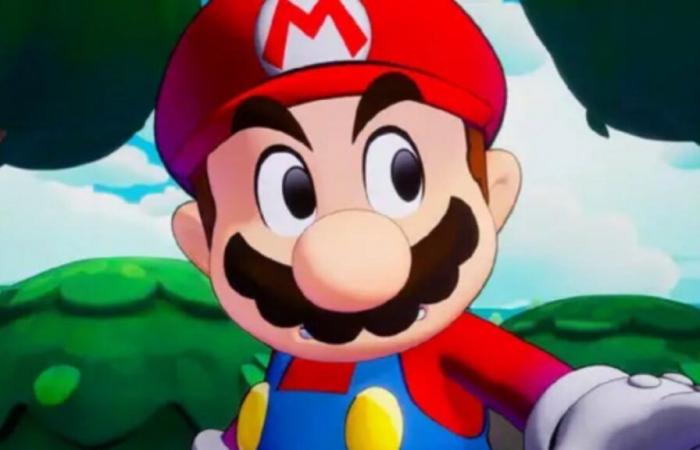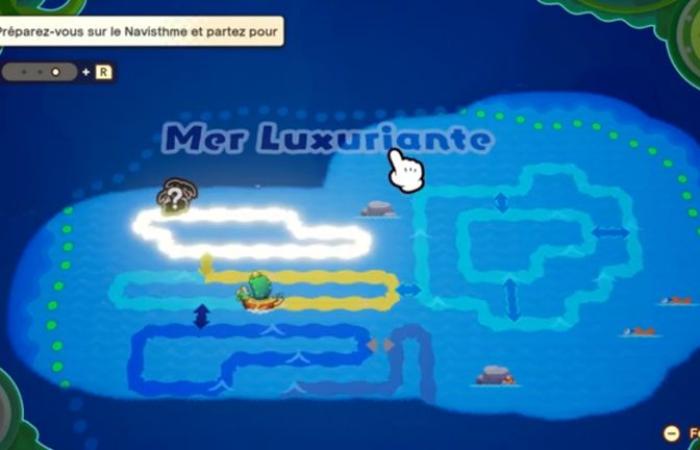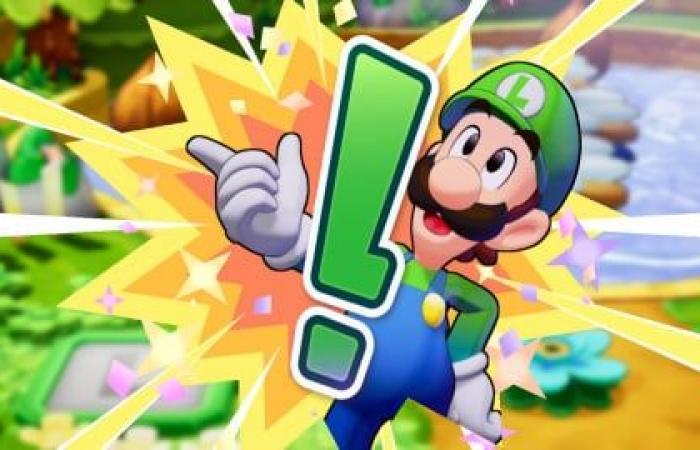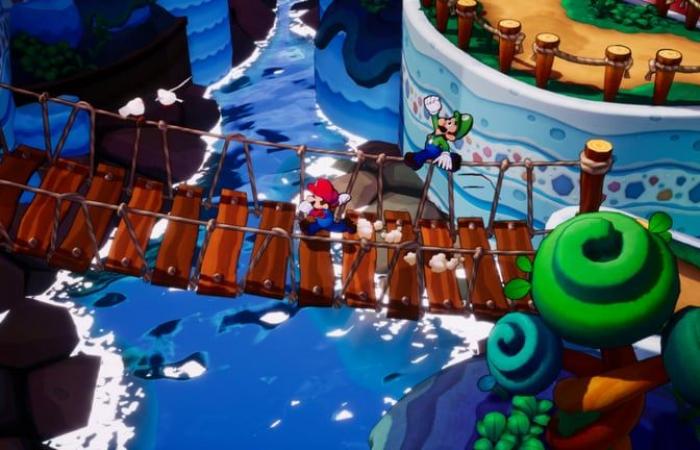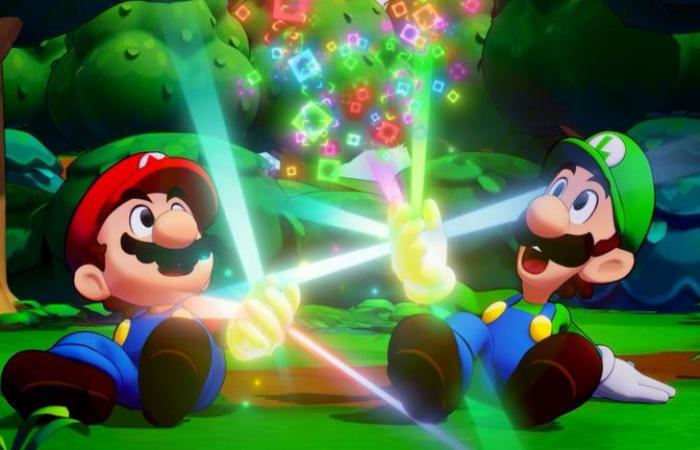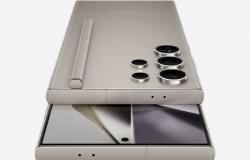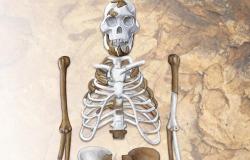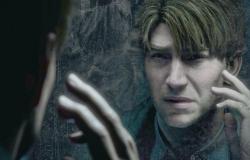Six years have passed since the release of a last Mario and Luigi game, an RPG series that has become legendary since its creation in 2003. We even have to go back to 2015 to see a last new episode appear. An absence justified by the closure of the Alphadream studio, the main developers of these very special turn-based RPGs, in 2019. The surprise is then total among players when Nintendo, in June 2024, presents Mario and Luigi: the brotherly epic. The series will return to Nintendo Switch on November 7. A sixth opus that we were able to test. A return of the two brothers too good to be true?
Mario and Luigi set off on an adventure again, a little by chance, in the fraternal epic. While being chased by a group of bees, Luigi has no choice but to jump into a ravine. Mario catches up in the extremes ! A fraternal rescue which causes the opening of a breach in the sky, which sucks in a large part of the Mushroom Kingdom.
The two brothers, initially separated, find themselves in the world of Connexia. An originally unknown event has fractured the continent. The latter's regions are now islands and are scattered across the seas. Mario and Luigi, as good Samaritans, will offer their help to Amperia : she is a volticulturist who needs help to reconnect the islands thanks to their lighthouses. And it is on the navisthmus, a drifting island which acts as a boat, which serves as the base of operations.
Mario and Luigi: the brotherly epic pushes the license a little further into the general public on the universe side. Something that was already observed with the last episodes. We find the comic side, with Luigi more in the spotlight, particular to the series. There has been a huge amount of work by the translators regarding all the puns related to the theme of adventure with electricity: Amperia; Voltfas, Dis-Jonc-Terr… However, we do not find the darker, more assumed side of the first episodes. Generally speaking, the plot is agreed, offers few twists and turns and still lacks identity. Pitfalls all the more noticeable when traveling with it for more than thirty hourstime that must be invested to complete the game in a straight line.
Hero despite Luigi
This length of the scenario is all the more felt by the exploration loop. To connect the islands to the navisthmus through their lighthouses, Mario & Luigi must first discover them. You must then sail from current to current through a dedicated map then go around it in the hope of finding unknown lands.. A passive method of movement since you do not control the boat which, in addition to that, has disadvantages. The biggest black point among them being that of the rhythm.
In fact, the navisthmus does not go at the speed of light and it takes a certain time to reach the desired current. So there is downtime on every trip. We can try to keep ourselves busy by carrying out missions, side quests, islands already visited thanks to a special object allowing us to teleport there. The navisthmus continues its journey, which can be monitored using the map at the top left of the screen. But these side activities don't really succeed in filling the dissatisfaction with the pace. We observe loading times and then, the duration of these side quests are never tailor-made for the journey. Either we will be back on our boat early and we will have to wait, or we will have to take another ride if we are late.
It's all the more a shame that Mario & Luigi: The Brotherhood Epic offers rich additional content. There are collectibles to collect, special requests to craft equipment or even challenges in the form of monsters to face. Additional content that could have prevented seasickness.
Once the other seas are unlocked, it can be a very long journey back.
When Christophe Co(u)lomb meets Mario and Luigi
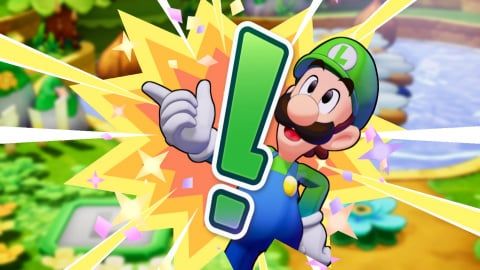
Then comes the discovery of the islands themselves. Like Christophe Co(u)lomb, Mario and Luigi must repeatedly resolve the problems of the natives before being able to access the local lighthouse. As in previous episodes, the two brothers can count on their double actions to overcome obstacles. Roll up into a ball to access narrow places, use a helicopter to fly over precipices… You have to put your brains into motion even if it's Luigi who does most of the work.
As mentioned previously, it is the more naive of the two who takes center stage for once. In addition to his emphasis in the story, he often brings to the table a decisive element for the puzzles through his genius ideas. You can then give him orders to break crates, dig up turnips or recover coins. It is controlled by artificial intelligence 95% of the time. Enough to make the adventure easier but which contributes to the loss of identity of the license: we control the two characters too little independently of each other. The individual sequences, puzzles or exploration, are quite few in number. The first are successful if not revolutionary, while the second, rare, are memorable because of the difficulty of the solo fights.
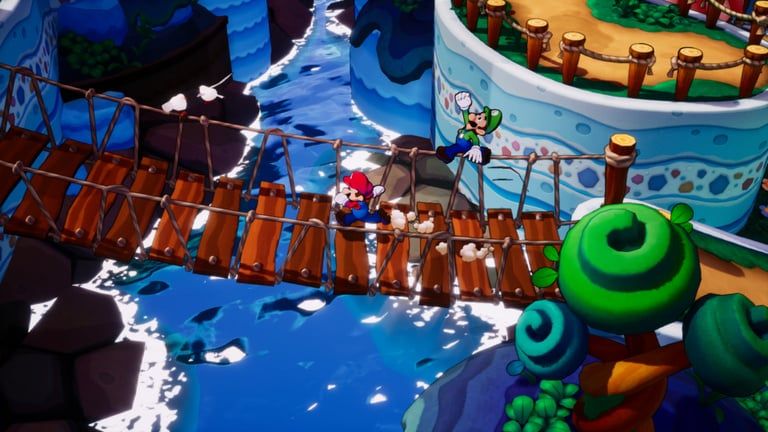
Very trendy fights
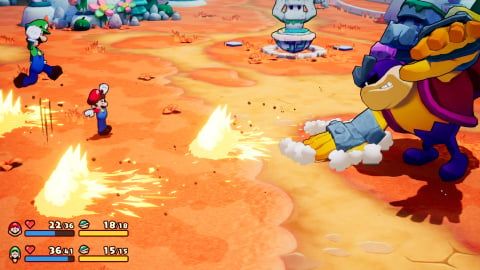
Let's talk about the fights. Mario & Luigi: The Brotherhood Epic retains the main proposition made by the Mario RPGs. These are fights where you have to decide for each of your characters their future action. The main variation of Mario & Luigi is to press at the right time, in attack or defense, to optimize its effectiveness. Pressing with the right timing on attack allows you to deal more damage with an additional attack. Equivalently, good timing acts as a counterattack in defense. A way to constantly involve the player during combat and avoid the pitfall of “ha, I’m waiting for the animations to end”. More than 25 years later, it still works just as well. Especially since each enemy has specific attacks. We must therefore adapt to each situation. An observation crystallized by the boss fights, demanding without being insurmountable… even if they can be a bit long.
It is also through the fights that Mario and Luigi: The Brotherhood Epic brings its major new functionality to the saga. This is combat holds, a feature that allows you to customize your attacks and defense. They have all kinds of effects that are useful in combat, such as the ability to cancel damage taken or add the fire element to each of its attacks. It is possible to equip several of them from the start of the adventure and it is their combinations which sometimes create additional effects. Enough to multiply the experiences especially since these sockets cannot be used unlimitedly. They have a limited number of uses and recharge over turns in combat. Enough to force the use of combat holds other than those which appear to be the strongest, especially since you can change them at any time, even during a confrontation.

Alongside this capture system, we find the foundations of turn-based role-playing. Mario and Luigi gain experience after each victory in battle. At the right of a certain accumulated amount, they then level up, which allows them to improve their statistics: strength, defense, speed… Statistics which can also be reinforced through outfits, accessories, gloves and weapons to find during the adventure.
The technique under pressure, the artistic direction underperforming
The fights are therefore very satisfying to do basically but it is also thanks to the form that we come back to them. Controller in hand, there is real gaming pleasure in pressing the keys at the right time. It is also at the level of the eyes and ears that we return, the work around the animations being remarkable.
In terms of a more global register, the artistic direction is more disappointing. Perhaps because, as the years go by, we expect more from Nintendo which manages to surprise almost every time. For Mario and Luigi: The Brotherhood Epic, it's super colorful, very pleasant for the eyes and like a majority of titles released recently, it works very well on the OLED model. But for all that, there are no jaw-dropping memorable places. Especially in comparison with the first episodes of the license. Several islands are aesthetically similar and only two or three stand out from the rest. An identical observation for the characters.
In a technical and performance register, the concerns expressed during the overview were confirmed. Nothing dramatic, but the ergonomics drag down the title. There are multiple loading times and fluidity that is far from constant. All this is combined by various back and forths in the menus, the cards. Which, in conjunction with the exploration loop, really breaks up the rhythm. Flaws that do not allow you to enjoy the game over long sessions.

Conclusion
Points forts
- Luigi in the spotlight
- The clashes, as exhilarating as ever. Especially with combat holds!
- Generous additional content
- Neat animations
- Very (too?) accessible
Weak points
- Without real visual identity
- Redundancies at several levels
- Lack of fluidity, both in substance and form
- Lots of length
- A very linear narrative
With Mario and Luigi: The Brotherhood Epic, it is easy to see that Nintendo wants to offer the return of a license appreciated by fans without getting too involved. We find an effective combat system, still as exhilarating thanks to its modernization in both substance and form. Conversely, the story told and the environments illustrated lack a strong identity: yet this is also how the Mario and Luigi games were able to shine. This overly smooth side, however, allows a wide audience to get into the swing of things, especially with the treatment (whether for the writing or the gameplay) of Luigi. But everyone will encounter a sea voyage agitated by multiple interruptions and repetitions. Like Ulysses in the Odyssey, Mario and Luigi arrive safely but not without some scars. Like the Greek hero, they will need a few additional exploits to hope to enter the legend once again.
—
Readers' opinions
Give your opinion on the game!

